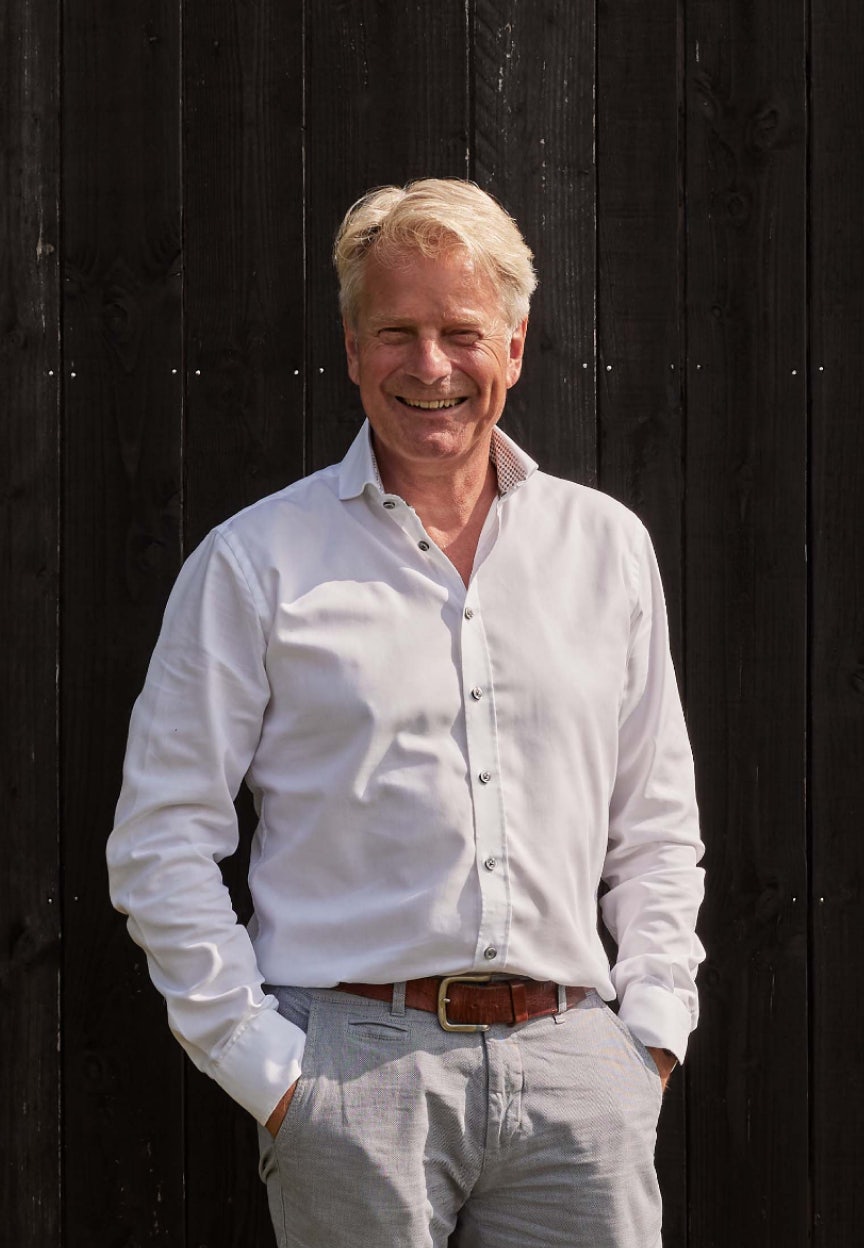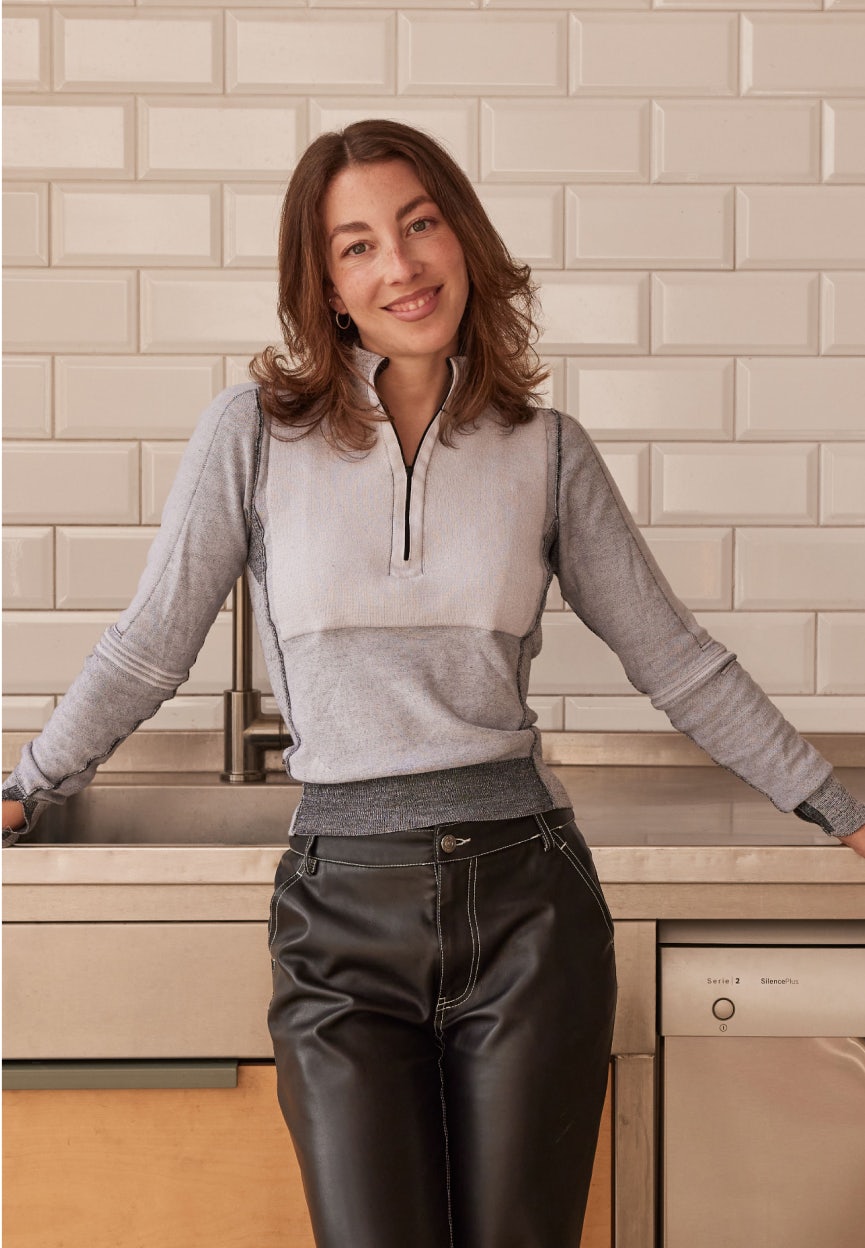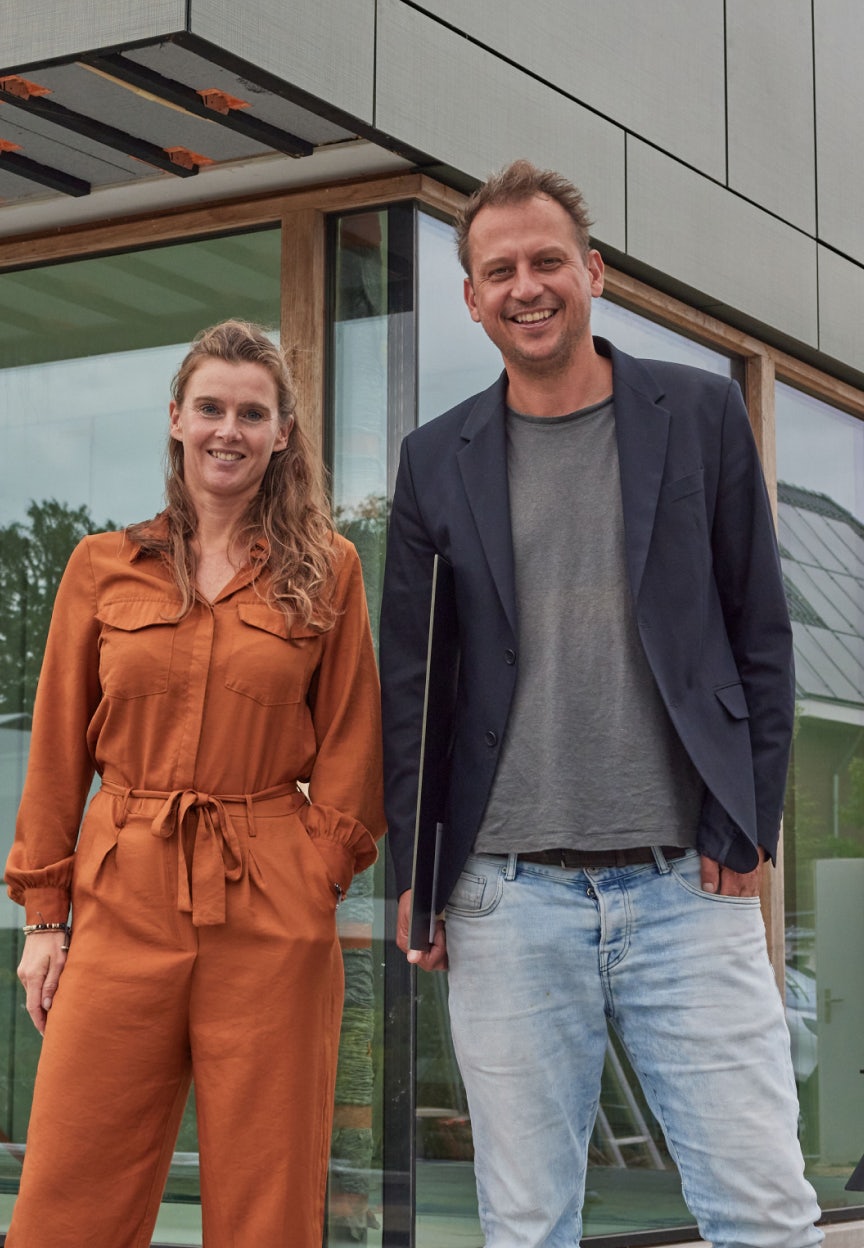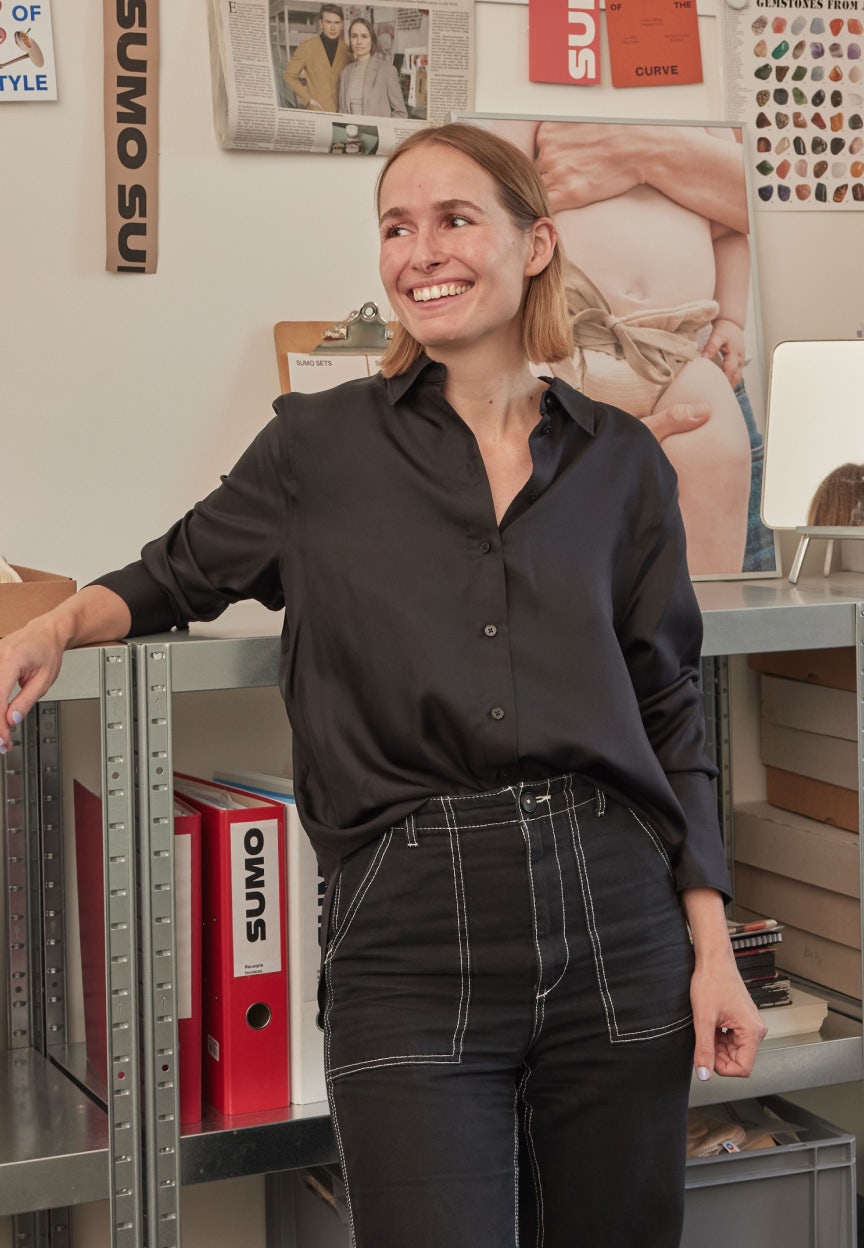
ElectricSkin
Paige Perillat Piratoine, Catherine Euale, Nada Elkharashi, and Sequoia Fischer
Electric Skin is a speculative idea that can change how we relate to daily electronic objects, such as our phones. A team of female biodesigners use bacteria that naturally produce electrical proteins for use in electronics. It could be possible to make compostable electronics by integrating these proteins into algae-based biomaterials.
This pioneering project suggests the use of renewable resources instead of adding to the global demand for precious metals that are used in electronics. Some are found in only 1% of the Earth's crust. This invention could also reduce massive piles of toxic e-waste. In 2022, 62 billion kilograms of electronics ended as waste, but only 22.3% was collected and recycled.
Paige Perillat Piratoine is one of the co-founders. She has high ambitions for the future. We spoke with her about this journey, her dreams, and the challenges of navigating unfamiliar territory.


Hi Paige. You are working on a very speculative project. What drove you to this journey?
Paige: “When I studied geography in Dublin, I initially went in the direction of urban agriculture. I was really interested in bringing plants back to the city and reconnecting people to their food sources. That's also where I got the chance to do a short Synthetic Biology course at the Science Gallery. For my dissertation I learned about aquaponics, hydroponics and mushroom growing. And how such high-tech systems could be implemented into cities and in business models. I realized it wasn't just about bringing plants back. It was about changing all the materials around us.
What has always driven me, is the feeling of the materials around me when I walk in a city. This appeared to me very starkly about a decade ago, when I came back to Europe from travels in the US and South America. There’s much more wilderness there. I arrived in London where I was going to live for a few years, and I felt profoundly uncomfortable, airless and confined. I was surrounded with cement, glass, and plastic. All these flat, lifeless materials really felt like they were amplifying all the noises. I had a very embodied sense of ‘this is wrong’ ”.
You found three other women who also believe in biodesign. How did you get together?
Paige: “We met online! It was during the annual Biodesign Challenge themed Redesigning Electronics. It's a competition that happens every year with universities across the world. In 2021, they were collaborating with Google. We participated in a smaller sprint called “Redesigning Technology”. Catherine, who is our material researcher, is based in Mexico. Nada is our designer, she’s in Qatar, Sequoia is a synthetic biologist, she’s based in Arizona, and I am the business developer. Currently in the US, but I recently moved to the south of France.”
Each of us entered individually in that challenge and we were put together completely by chance. I’d say all four of us have a sense of biophilia: loving the natural world and wanting to integrate much more of it in all the systems that we're part of. And all of us believe in biomimicry: what does nature do that we can mimic and how can we design daily objects in a way that gives back to nature? We wanted to apply that to the task at hand: Redesigning Electronics.”
I’d say all four of us have a sense of biophilia.
So, you want to mimic nature to change electronics. What are the main issues in this industry?
Paige: “It’s mostly a materiality problem. Not to mention the geopolitical and human rights issues that go along with the extractive processes required to fabricate our devices. There's an emergency about how we collect the materials and minerals we're using for our products. We're destroying landscapes for generations to get tiny little metals that we use in our phones. Copper, cobalt, lithium, and nickel are minerals that are crucial for batteries. These, among other minerals, are very scarce. They are comprising only about 1% of the Earth's crust. We are quickly running out of these minerals, but what's even more concerning is that we're making batteries at an even faster rate. That's a big problem.
Yet we're purposefully designing products, such as phones, not to last. And as consumers we always want what’s new on the market. We are assembling products in sometimes horrible human labour conditions and then we throw it all in these massive piles of e-waste. In 2022, the global generation of e-waste was 62 billion kilograms. Only 22.3% of it was collected and recycled in an environmentally sound manner. This shows the huge gap in effective e-waste management and recycling efforts. These mountains are leaching toxic chemicals that again destroy landscapes for generations and cause serious human health issues. All of it is just an ugly process.
Not only that, but we are also transporting raw materials from this place to that place with a very high carbon footprint. There are already companies ready to mine into the deep sea, destroy that landscape forever and disrupt potentially important flows in the planet.”

What did you learn from nature that inspired you to redesign this destructive process?
Paige: “Our electronics as we know them are flat, lifeless pieces of equipment that we carry around every day. But our phones are also like our pets. They're always tied to our hands. We asked ourselves: “What if it was designed in such a way that you want to keep it and take care of it? What if we design something that is almost like a living, breathing object. Not flat and smooth, but textured? Wouldn’t that influence how we handle the object?”
We stumbled upon this article called The Mud is Electric. The title really caught our attention. It talks about bacteria that have been on earth for millions of years, called Geobacter Sulfurreducens. It is a one-celled organism. It exists in muds everywhere in the world, where there's no oxygen. For example, in the deep sea and in ponds. The scientist Derek Lovely not only discovered the bacteria, but he brought it back to his lab and found out that it was creating proteins. These proteins use the metals in the soil to metabolize. He extracted just the proteins and put them between two electrodes. Together with an electrical engineer, they saw that these proteins generated a little bit of electricity.
They connected a bunch of these bacterial cells that contain the proteins and electrodes. And they managed to light a little led lamp! We thought this is incredible, that proteins can generate power. We wanted to work with this. We thought that with synthetic biology and with bacteria, there is a way to design an organic material that generates power, like a battery does, completely outside of the current mining industry.”
So, you use electrical proteins produced by bacteria instead of traditional minerals for electronics that require mining. How does Electric Skin work?
Paige: “What we essentially create with Electric Skin is micro lightning.
Firstly, we're not using the Geobacter Sulfurreducens bacteria anymore. We only use the protein that Derek Lovely extracted from it. This is a good example of synthetic biology, because we can put these proteins in an easier to handle bacteria. We use the ones that can make more proteins, like the E.Coli bacteria. We can program bacteria to make them do what we want.
These proteins, that are now in the bacteria, can generate power when they interact with humidity. So, if we connect enough of the bacterial cells together and expose them to humidity, we can make more and more electricity.”
By amplifying the surface area, we can amplify the electrical output.
How do you see this organic bio-cell or battery used in products?
Paige: “We are still struggling a bit with where we fit in. Are we a solar cell or are we a battery? I don't quite know yet. We need to talk to people in the industry to really understand what it is we're doing. But we’re creating an organic material akin to a battery.
I can see us going big and work on alternative electronics for phones, replacing the metals that are now used. To generate enough power, we need a bigger surface than a flat phone offers. Making textured surfaces could help with that, like a wavy surface, going up and down. By amplifying the surface area, we can amplify the electrical output.
Other scientists think that you can also spun the proteins together to create protein threads. These could act like little electrical cables.
So in the future we also see potential beyond just electrical production. We could create bio-based electrical components like cables made entirely of proteins rather than other metals.
Right now, as a first step, we're thinking of putting biodegradable sensors in agricultural lands to measure different soil and pollution levels. Normally, it costs a lot to put in sensors to measure environmental impact of agricultural activities, and it costs extra to retrieve them afterwards. We are investigating sensors that can measure for a few years, and then decompose into the soil. That might save costs and reduce impact of the measuring process itself, and there’s no e-waste afterwards.”

A living product made of bacteria. That may sound exciting to some, but scary to others... How do you make it attractive?
Paige: “I find it incredibly sexy! But true, when I talk to any of my friends, they don't think that way. We’re living in a society that's very anti-bacterial.
This is why our designer Nada is so important. She's incredibly good at explaining what we're doing. Making this weird process of working with bacteria into a beautiful kind of graphic story. In a way, I think that's an important part of what we're doing. We want to make people dream about bacteria, make biology a sexy idea for people.
Part of our idea is also that bacteria are a great decentralized resource. You can cultivate these electrical proteins everywhere. Bringing it closer to people’s home, as a renewable resource, may help to bring the idea across. We can see how people could have tiny little bioreactors in their homes, creating their own proteins and assembling their own electricity sources. The big advantage is that growing these proteins is not constraint by weather conditions, like other renewables such as solar or wind. It simply needs the humidity of air, which is present all around us.”
How will you take Electric Skin to a next level? What challenges do you have to overcome?
Paige: “Honestly, there's a lot of things that must happen in parallel. The research and prototyping are absolutely the first thing. We’re doing it with very little budget. So far, we’ve created many tests and prototypes in our individual workspaces, and we are collaborating with universities when we can to access equipment. Our lab work is all done in Sequoia’s garage turned lab. Our materials and fabrication are crafted and tested by Catherine, and Nada works on integrating all these components in functional and aesthetic designs. With that process we're already able to measure a current, a wave of electricity. We have prototyped small devices that are able to slowly charge tiny batteries and sensors. But they are still prototypes. We want to craft a product that is made with lab grade equipment and then start testing in real life conditions.
Another challenge is that we’ve been working in a decentralized way, four women across the globe. Prototyping from the four corners of the world is difficult. It's been a very intentional but slow process. We have to ship things from one place to another. We have to decide how to spend money together. And sometimes there’s miscommunication as well. On the positive side, it multiplies our opportunities and reach because we're all spreading our idea in our different continents.”

What do you need to start testing in real life conditions, maybe our readers can support you?
Paige: “First, we need someone to help us navigate all the different strands of genetic material of the bacteria, to understand the bacteria and its possibilities even better. But we could also use support from people that are working with sensors or in the ‘Internet of Things’. Or that are developing all these new kinds of technologies. They probably already have a very good idea of where we could go with this, and what the initial applications could be. We could use a superstar consultant with expertise in the electronics industry, who's been following all the advances in this field.
And then this question: what if it takes off? Where do we gather? Where do we start? What country do we decide on? Once we've made that decision, a lot of things unlock. We need help from someone who has done business across the world with practical business support.”
Is there one last message you would like to share with us?
“I learned that there's another way to look at materials. We can learn from organisms like bacteria, mycelium and microbes!
For us, the future is biomimetic, and bio based. Micro-organisms are going to have a huge role to play in the future of our materials. They can show us how we can live on earth in coexistence with the rest of the natural world. And I think Suzanne Lee, a fashion designer specialized in sustainable fashion and biotechnology, says it very well: you need to get designers in the room with scientists because together they can solve a lot of the problems we’re facing.”
ショート・ストリーズ

小さなもののパワー
ランチタイムです。新型コロナウィルスのため、共同創設者のルネは、社員と共に本社にいるのではなく、予防接種を受けた両親のゲリー(81歳)とジョープ・ファン・ギア(91)とリビングルームにいます。オンラインビデオを使用して、父と息子の関係について、人生の先輩として息子にどのように影響を与えたのか、そしてウォレットのバネについて語ってもらいました。

小さなもののパワー
ランチタイムです。新型コロナウィルスのため、共同創設者のルネは、社員と共に本社にいるのではなく、予防接種を受けた両親のゲリー(81歳)とジョープ・ファン・ギア(91)とリビングルームにいます。オンラインビデオを使用して、父と息子の関係について、人生の先輩として息子にどのように影響を与えたのか、そしてウォレットのバネについて語ってもらいました。

小さなもののパワー
ランチタイムです。新型コロナウィルスのため、共同創設者のルネは、社員と共に本社にいるのではなく、予防接種を受けた両親のゲリー(81歳)とジョープ・ファン・ギア(91)とリビングルームにいます。オンラインビデオを使用して、父と息子の関係について、人生の先輩として息子にどのように影響を与えたのか、そしてウォレットのバネについて語ってもらいました。

小さなもののパワー
ランチタイムです。新型コロナウィルスのため、共同創設者のルネは、社員と共に本社にいるのではなく、予防接種を受けた両親のゲリー(81歳)とジョープ・ファン・ギア(91)とリビングルームにいます。オンラインビデオを使用して、父と息子の関係について、人生の先輩として息子にどのように影響を与えたのか、そしてウォレットのバネについて語ってもらいました。

小さなもののパワー
ランチタイムです。新型コロナウィルスのため、共同創設者のルネは、社員と共に本社にいるのではなく、予防接種を受けた両親のゲリー(81歳)とジョープ・ファン・ギア(91)とリビングルームにいます。オンラインビデオを使用して、父と息子の関係について、人生の先輩として息子にどのように影響を与えたのか、そしてウォレットのバネについて語ってもらいました。

小さなもののパワー
ランチタイムです。新型コロナウィルスのため、共同創設者のルネは、社員と共に本社にいるのではなく、予防接種を受けた両親のゲリー(81歳)とジョープ・ファン・ギア(91)とリビングルームにいます。オンラインビデオを使用して、父と息子の関係について、人生の先輩として息子にどのように影響を与えたのか、そしてウォレットのバネについて語ってもらいました。

